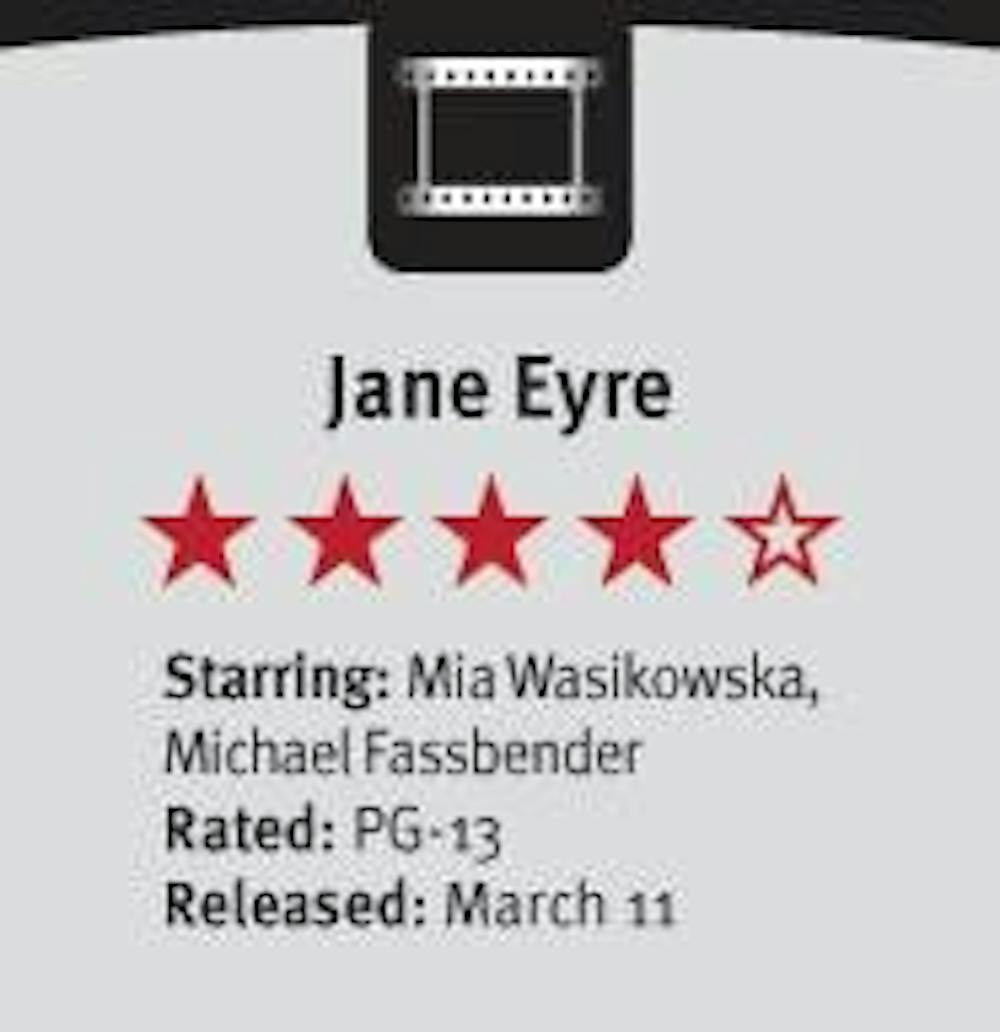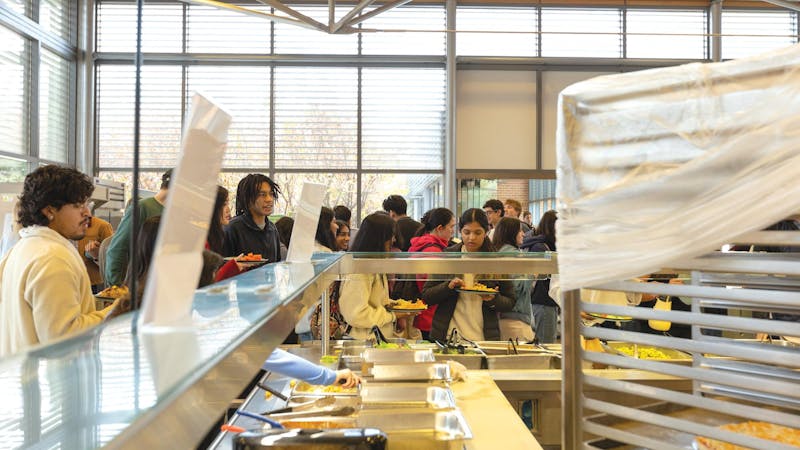New adaptation of Jane Eyre beautiful, haunting

Eerie music parallels a trembling camera shot of a heaving gate; it seems as if the viewer's own feet are rising and falling over the moor. In the opening moments of Jane Eyre the audience is Jane Eyre, experiencing her escape from Mr. Rochester's estate after learning about the mad wife he keeps locked and hidden on the third floor.
And so, with the flurry of Jane's exodus once more into the bitter wilds of the world, director Cary Joji Fukunaga's (Sin Nombre) stunning adaptation of the Charlotte Brontë classic Jane Eyre begins. Not a prototypical stuffy Victorian literature novel awkwardly transposed into film, Jane Eyre is a nuanced portrait, tautly exploring both the romanticist and Gothic elements evident in the text.
Fukunaga weaves a compelling narrative, utilizing flashbacks from Jane's present situation at the Rivers' estate to explore her childhood and tenure as a governess. In revealing Jane's "tale of woe" using such a fluid timeline, the audience is kept awake and curious.
Mia Wasikowska (Alice in Wonderland) is haunting as Jane Eyre, the "small and plain" governess and autobiographer. Jamie Bell (Billy Elliot) charms as St. John Rivers, who seems to harbor a secret affection for Jane even as he tries to bulldoze her into becoming his missionary wife.
In a departure from the text's description of a cold and calculating rector later revealed to be Jane's cousin, Bell plays Rivers with a twinkle and dash of naïveté, and the Rivers family claims no relation to Jane. Dame Judi Dench (Nine) forces a bumbling and unconvincing nature onto the character of Mrs. Fairfax, though as a stout English matron she provides some comic relief in her reactions to the coquetry of Jane's French pupil Adele. Michael Fassbender (300) is perfect as Rochester: glowering, moody, relatively unknown and definitively not a Hollywood pretty boy.
Fukunaga's adaptation highlights the proto-feminist element of Jane Eyre, in its exploration of Jane's journey to independence (culminating in the novel with her inheritance of wealth). Indeed, Jane remarks to Mrs. Fairfax at one point that it "pains [her] to agitation that the horizon is so limited." Jane yearns for an independent, secure place in the world she can claim as her own, where she no longer needs to hide behind the curtains from her cousin or fear the confines of the dreaded Red Room, where her aunt locks her up.
In the witty repartee in which Jane and Rochester engage, Fukunaga captures the fighting spirit in the otherwise demure governess, giving her the tenacity and spirit that set her apart from the vapid, shallow women in the film.
Jane boldly informs Rochester she certainly does not consider him handsome and candidly remarks that, although some might submit to anything for a salary, she has standards. Jane has an identity, and although she works as a governess, she will not degrade herself to Rochester with false praise.
Though at times the repressed Victorian state of the characters is too controlled and the actors come across as emotionless and flat, the injections of humor and interwoven vignettes of Jane's life keep the film flowing.
Additionally, Bertha Mason, the mad wife of Rochester played by Valentina Cervi (The Portrait of a Lady), is left completely undeveloped. Her presence is the motive for Jane's abandonment of Rochester, yet her story and moralistic fall into the vices of lust and alcohol, are left completely untapped. She represents a truly Gothic character of horror, and Fukunaga neglects to utilize her to advance the darker undertones of the novel.
Ultimately, however, Fukunaga delivers a powerful film: dove-tailing the Gothic and Romantic into a nuanced study of a woman's journey of independence and her redemptive love. Jane Eyre is a well executed and modern approach to one of the most important novels of the 19th century.
More from The Rice Thresher

Over 1,000 students petition against new meal plan
When Konstantin Savvon opened the Housing and Dining email announcing the new unlimited meal plan, he was instantly concerned about the impact on off-campus students like himself.

Rice football wins season opener under new coach
For the first time since 2018, Rice football opened its season with a victory. Scott Abell was soaked with yellow Powerade following a 14-12 win on the road Saturday against the University of Louisiana at Lafayette, which won 10 games and made it to the Sun Belt Conference championship last season.

Acting like an athlete: Rice basketball alum takes on Broadway
Underneath Chadd Alexander’s Broadway costume, there’s ankle tape and wrist braces — same protective gear he wore as a walk-on basketball player at Rice, though now he’s performing eight shows a week in the ensemble of “Harry Potter and the Cursed Child” instead of running conditioning drills in Tudor Fieldhouse.

Please note All comments are eligible for publication by The Rice Thresher.